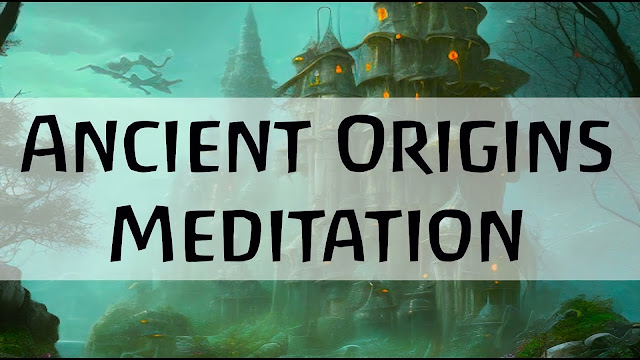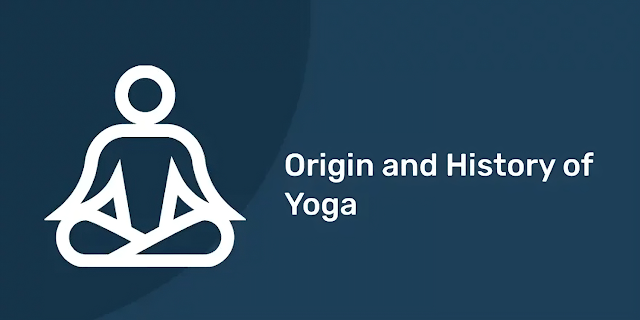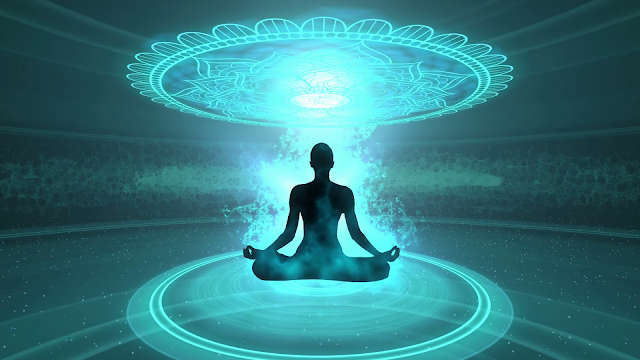The History of Meditation: Understanding Its Origins and Evolution
Namaste,
The history of meditation spans millennia, offering a profound glimpse into the cultural, spiritual, and philosophical evolution of humanity. Dating back to ancient civilizations, the practice of meditation, in various forms, has been an integral part of societies worldwide. The history of meditation reveals its transformative journey, showcasing how 'The history of meditation' practices evolved, adapted, and flourished across diverse cultures and periods.
The history of meditation is a fascinating topic that has been explored by many scholars and researchers. Meditation is an umbrella term for a variety of practices, but if we broadly define meditation as a contemplative practice that focuses the mind using a variety of techniques, then research suggests it has been a spiritual practice of human beings since our beginnings . In this blog, we will explore the origins and timeline of meditation in different cultures, from ancient Vedic and Buddhist traditions to modern Western and Eastern forms.
 |
| The History of Meditation |
Introduction: Unveiling the Timeless Art of Meditation
In the hustle and bustle of our modern world, where chaos often reigns supreme, there exists a serene and ancient practice—a silent sanctuary amidst life's cacophony—that has gracefully transcended centuries: Meditation.
Amidst the dizzying speed of life, imagine finding an oasis of calm, a space where tranquility rules, stress melts away, and clarity reigns. That is the magic of meditation—the art of finding solace within oneself, often in the midst of life's storms.
Meditation, once regarded as an esoteric practice limited to monks atop misty mountains, has become a guiding light for many seeking balance, clarity, and peace in their hectic lives. Its significance in today's fast-paced society is undeniable, offering a refuge from the ceaseless whirlwind of modernity.
Beyond its age-old spiritual roots, meditation has caught the attention of scientists, psychologists, and wellness enthusiasts alike, drawing attention to its scientifically-proven benefits. From reducing stress and anxiety to enhancing focus, creativity, and overall well-being, its impacts echo far beyond the serene confines of a meditation space.
In this blog, we will explore the history of meditation, its origins, and how it has evolved over time. We will also discuss the different types of meditation and how they can benefit you in your daily life. Whether you are new to meditation or have been practicing for years, this blog will provide you with valuable insights and tips to help you get the most out of your meditation practice.
So, if you’re ready to learn more about the benefits of meditation and how it can help you lead a happier, healthier life, then let’s get started! 🧘♀️🧘♂️
The Origins of Meditation: The Origins Unveiled: Meditation's Ancient Legacy and Evolution
Journey back in time, beyond the labyrinth of modernity, to the serene landscapes of ancient civilizations—the cradle where meditation first emerged, leaving an indelible mark on human history.
- Roots in Antiquity: The earliest whispers of meditation dance through the corridors of time, dating back thousands of years. Steeped in antiquity, ancient scriptures—such as the revered Upanishads—offer the earliest documented accounts of meditative practices. Within these sacred texts lies a treasure trove of wisdom, detailing the profound art of introspection and self-discovery.
- Pioneering Spiritual Traditions: Meditation found its firm footing in the tapestry of Hinduism, Jainism, and Buddhism, where it thrived as a cornerstone of spiritual development. In Hinduism, the ancient practice of 'Dhyana' (meditation) was extensively explored in texts like the Bhagavad Gita, while Jainism illuminated 'Samayika' (equanimity through meditation) as a means of achieving enlightenment. However, it was within Buddhism that meditation blossomed into a deeply integral aspect of religious practices, famously leading Siddhartha Gautama, the Buddha, to enlightenment under the Bodhi tree.
- Asia's Cradle of Meditation: Across Asia's vast lands, meditation was woven intricately into the cultural fabric, embraced by monastics and seekers alike. Its silent teachings echoed in the secluded caves of India, the Zen gardens of Japan, and the serene temples of Thailand, where it flourished as a path to spiritual awakening and inner peace.
- Global Journey: While meditation held sway in Asia for centuries, the 20th century bore witness to its migration across continents. Influential figures like Swami Vivekananda and the transcendental meditation movement by Maharishi Mahesh Yogi sparked a global curiosity towards meditation in the West. Slowly, meditation transcended cultural barriers, finding its place in the bustling cities of the Western world, captivating minds hungry for tranquility amid modern chaos.
The History of Meditation
Embarking on the Timeless Journey: Tracing the Rich Tapestry of Meditation's History
Let's journey back through the annals of time, where the rhythm of life echoed with whispers of meditation—etched in the very fabric of our ancestors' existence.
- Ancient Beginnings: Picture an age where fire cast its warm glow upon nomadic tribes. Between 200,000 and 150,000 years ago, our forebears gathered around flickering campfires, and engaged in group rituals and meditations. This communal practice nurtured a cognitive gem—working memory—fundamental for human evolution's grand tapestry.
- Roots in Animistic Traditions: Long before the rise of organized religions, ancient societies wove a spiritual tapestry, adorning their belief systems with reverence for nature's elements—the vast expanse of water bodies, the sun's radiant embrace, the mystical dance of the moon, the life-giving essence of plants, and the kinship with animals. These animistic faiths celebrated ancestral spirits and celestial beings, forging a connection between earthly dwellers and the divine realm.
- The Shaman's Reverie: Enter the realm of shamans—spiritual leaders revered as healers and mediators between worlds. Within their sacred practices lay a form of guided meditation known as shamanic journeying. Through rhythmic chants, drumming, and trance-like states, they embarked on ethereal voyages, navigating the labyrinth of the spirit world, seeking wisdom, healing, and divine communion.
- An Echo Through Millennia: Across diverse landscapes, from ancient civilizations to nomadic tribes, meditation threaded its way into the very essence of existence. Its echoes reverberated through the corridors of time, leaving an indelible mark on human consciousness.
Meditation has been an important part of human history and has been practiced in many different cultures and traditions. It has evolved over time and has been shown to have numerous benefits for mental and physical health. Whether you are new to meditation or have been practicing for years, it is a powerful tool that can help you achieve greater peace, happiness, and well-being.
 |
| Origin of Meditation |
Meditation in Different Cultures
The ancient practices of Indian yogis resonated with the influences of Buddhism, Taoism, Christian contemplation, and the harmonious amalgamation of global meditative practices. It unveils a rich tapestry of cultural influences, shaping meditation into a profound vehicle for personal and spiritual growth across diverse traditions and landscapes.
- Yogic Pioneers: The sacred land of India, steeped in spirituality, has fostered an unparalleled legacy of meditation through the revered practices of yogis and sages. Embracing Inner Transformation: Indian yogis, custodians of ancient wisdom, unraveled the depths of the mind through meditation. From the asceticism of Patanjali's Yoga Sutras to the profound revelations of Vedanta, their teachings unveiled the transformative power of meditative practices for spiritual elevation.
- Buddhist and Taoist Marvels: Transcendence Beyond Borders: Beyond India's borders, Buddhism and Taoism adorned meditation with their unique brushstrokes. In the East, Buddhist meditation blossomed, fostering mindfulness and compassion. Taoist teachings, encapsulate harmony with nature, enriched meditative practices, echoing whispers of balance and serenity.
- Christian Contemplation: The Path to Divine Union: In the West, Christian contemplation unveiled meditative practices within Christianity. Mystics like Teresa of Avila and John of the Cross illuminated paths of divine communion through silent reflection, nurturing meditative traditions in the Christian faith.
- Global Impact: A Mosaic of Meditative Practices: As these diverse traditions mingled, meditation transformed into a global tapestry. The fusion of Eastern and Western philosophies birthed contemporary mindfulness practices, fostering well-being and resilience amid modern chaos.
The Timeline of Origin to Evolution Mediation (Based on available sources)
Meditation is an ancient practice that has been around for thousands of years. The exact timeline of meditation is difficult to trace, but research suggests that it has been a spiritual practice of human beings since our beginnings ↂ.
Here is a pointwise timeline of the history of meditation:
1. Origins of Meditation: The origins of meditation can be traced back to group rituals and meditations around the campfire between 200,000 and 150,000 years ago ↂ. These practices helped our ancestors develop the working memory essential for human evolution. Ancient animistic religions common to hunter-gatherer societies involved the worship of natural elements like water bodies, the sun, the moon, plants, animals, ancestors, and celestial or spiritual beings ¹(https://positivepsychology.com/history-of-meditation/). The majority also relied on shamans as healers and intercessors with the spirit world who performed a kind of guided meditation practice called shamanic journeying ↂ.
2. Meditation in India: The first written records of meditation are believed to have originated around 1500 BCE from Vedic texts, an ancient Indo-Aryan religion of Central Asia that is the precursor of Hinduism ↂ. These documents speak of the concept of dhyana, a term later used in both Buddhism and Hinduism to refer to contemplation and meditation.
3. Meditation in Buddhism: In Buddhism, meditation is an essential part of the Eightfold Path, which is the path to enlightenment ↂ. Buddhist meditation techniques have been widely adopted throughout the world and have influenced many other forms of meditation.
4. Meditation in China: Taoist meditation has been practiced for thousands of years in China ↂ. It is believed that Bodhidharma, an Indian monk, brought Zen Buddhism to China in the 5th century, which led to the development of Chan Buddhism and the practice of seated meditation ↂ.
5. Meditation in the West: Christian meditation has been practiced since the early days of Christianity ↂ. In the 20th century, meditation became popular in the West due to the influence of Eastern spiritual traditions and the work of pioneers like Maharishi Mahesh Yogi, who introduced Transcendental Meditation to the West ↂ.
6. Evolution of Meditation: Meditation has evolved over time and has been adopted by people all over the world. Today, meditation is practiced by people of all ages and backgrounds, and has been shown to have numerous benefits for mental and physical health ↂ .
In summary, meditation has been an important part of human history and has been practiced in many different cultures and traditions. It has evolved over time and has been shown to have numerous benefits for mental and physical health. Whether you are new to meditation or have been practicing for years, it is a powerful tool that can help you achieve greater peace, happiness, and well-being.
 |
| Origin and History of Meditation |
Conclusion
As we draw the curtains on this enlightening journey, the echoes of meditation's ancient whispers linger, resonating with its timeless relevance in our modern world.
- A Tapestry of Insights: From the mystic realms of ancient yogis to the tranquil gardens of Zen masters, our exploration traversed through cultures and epochs, unraveling the profound art of meditation. We witnessed its transformative power embedded within the spiritual legacies of diverse traditions—Buddhism, Taoism, Christianity—each contributing unique hues to its canvas.
- The Essence Unveiled: Beyond cultural boundaries, meditation emerges as a catalyst for inner harmony, resilience, and self-discovery. It invites us to delve within, to navigate the labyrinth of our minds, fostering emotional well-being and spiritual elevation.
- The Modern Relevance: In today's fast-paced world, where chaos often reigns supreme, the practice of meditation emerges as a beacon of tranquility. It offers solace amidst the cacophony, nurturing mental clarity, emotional balance, and a sanctuary of peace within.
- Embarking on the Journey: For those venturing into this sacred realm, a simple beginning beckons. Start with a few minutes daily—sit in quietude, focus on the breath, and gently guide the mind back when it wanders. Gradually, weave meditation into your routine, embracing its gifts of serenity and self-awareness.
- A Timeless Companion: Let meditation be not just a practice but a companion on life's journey—a refuge amidst storms, a reservoir of calmness, and a wellspring of inner strength. In the tranquil sanctuary of meditation, lies the key to unlocking the treasures of our being—a journey that transcends time, culture, and creed, offering a pathway to personal transformation and profound spiritual growth.
As we bid adieu to this exploration, let meditation be the sacred thread weaving serenity into the tapestry of our lives—a timeless practice resonating through the ages, awaiting the embrace of those seeking solace and inner illumination.






.jpg)
-M-uS3IeIN-transformed.jpeg)

